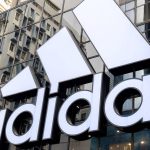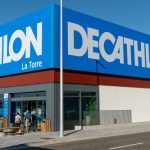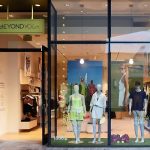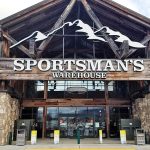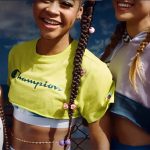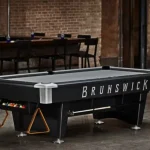At its annual investor meeting last week, VF Corp. established a revenue goal of $17.3 billion by 2017, representing a five-year compounded annual growth rate (CAGR) of 10 percent, with 8 percent organic growth and 2 percent growth anticipated from acquisitions. VF also announced its earnings per share target of $18.00 for 2017, representing a five-year CAGR of 13 percent.
Other broader targets in its updated forecast:
Gross margin is expected to improve to 49.5 percent in 2017, a 300 basis point improvement over the 46.5 percent gross margin achieved in 2012, thanks to exceptional growth in its highly profitable Outdoor & Action Sports coalition, direct-to-consumer and international businesses;
Operating margin is expected to reach 16 percent, up 250 basis points from the 2012 operating margin of 13.5 percent;
Annual cash flow from operations, by 2017, is targeted at $2.4 billion, with a cumulative $9.5 billion in cash flow to be generated between 2013 and 2017.
VFs Outdoor & Action Sports coalition is expected to continue to be the growth engine, with revenues expected to reach $11.1 billion by 2017. The growth represents a five-year CAGR of 14 percent comprised of 11 percent organic growth and 3 percent growth coming from acquisitions. The Outdoor & Action Sports coalition is expected to reach 64 percent of VFs total revenues by 2017, up from 54 percent in 2012.
Among the growth drivers for the Outdoor & Action Sports coalition:
The North Face brand is anticipated to grow at a 12 percent annual growth clip, with revenues reaching $3.3 billion by 2017 from $1.9 billion in 2012;
Vans raised its average annual revenue growth projection, initially provided in June of 2012, from 13 percent to 15 percent. The brand is now targeting total revenues of $2.9 billion by 2017, up from $1.5 billion in 2012;
Timberland, now in its second full year of VF ownership, continues to anticipate growing revenues at an annual CAGR of 10 percent over the next five years, increasing to $2.3 billion by 2017 from $1.5 billion in 2012.
Regionally, strong growth is anticipated for the coalition across all key regions: 12 percent in the Americas, 13 percent in EMEA and 24 percent in Asia-Pacific.
At the meeting in New York City, Eric Wiseman, VFs chairman, CEO and president, noted that the company originally laid out a five-year plan in spring 2011, a plan the company wound up exceeding at such a big rate that its goals were updated.
The March 2011 forecast also came three months before VF reached an agreement to acquire Timberland. As a result, revenue goals particularly benefited from the addition of Timberland and SmartWool, putting the company 2/3rd on the way to its revenue target. EPS is also 2/3 along toward the planned goal, with gross margins likewise ahead of plan.
Steve Rendle, group president of Outdoor & Action Sports America Outdoor & Action Sports coalition, said the most prior 5-year organic growth rate for this overall of Outdoor & Action Sports coalition was 12 percent. The new 14 percent target comes after the coalition has grown at a compounded growth rate of 15 percent over the last three years.
This growth will come from each of our global regions, each growing at double-digit rates, said Rendle. And were often asked the question about our individual brand growth opportunities, and I would tell you this. Were fairly immature in each of the regions that we do business with, and there’s a tremendous amount of headroom for us to grow in these years to come.
Rendle said all the coalitions brands will be integral to reaching his groups target of $11 billion by 2017, but he particularly focused The North Face, Vans and Timberland. The three brands made up 45 percent of VF’s total revenue, and are projected to grow to 52 percent of total sales. The coalition also includes Jansport, Kipling (international), SmartWool, Napapijri, Eastpak, Eagle Creek, Lucy and Reef.
Exemplifying the growth potential of the Outdoor & Action Sports Coalition, he discussed market share data around the three largest brands. The North Face did $1.9 billion in sales in 2012, representing only 8 percent of the global marketplace in the outdoor business. But its share is much lower when including the Action Sports and Performance business the brand also competes in, with those two areas combining for a $74 billion market.
Vans, at $1.5 billion last year, had a 5 percent share in Action Sports but likewise competes in other channels. Timberland held a 2 percent share in only footwear while carrying an exciting apparel opportunity that is just getting launched.
Regarding TNF, Rendle particularly highlighted its overall Performance category, which has seen a compounded growth rate of 24 percent over the last three years. Inside Performance, Training is growing at a 44 percent pace and were getting great placement here in the U.S., in Europe and just beginning in some of our Asian markets.
He noted that TNF is the #1 apparel brand in ski specialty and the ski market, or the action sports market for us, is a unique place for us to speak to a younger consumer. Relatedly, its recent agreement to sponsor the U.S. Freeskiing team will be the first time TNF will be able to participate and be seen on such a large global stage through just the massive media that these particular activities will be getting.
Around innovation, significant investments at TNF have been made over the last few years into advanced products and its materials research teams. A particular focus has been around moisture management with launches such as Flash Dry in not only sportswear but also outerwear and footwear. Temperature control with advances such as Thermoball, launching Fall 13, has also been a priority.
Rendle pointed out that there’s nobody in our space that will be able to out-innovate us when you think about the consumer insights that we have, the understanding from our athletes and the information we receive from our consumers, as well as the ability to access the leverage of VFs platform.
Specifically on the footwear side, with outdoor activities trending faster and mobility and performance are becoming very, very important, TNF can benefit be its positioning as an alternative to the many big and bulky offerings and lightweight, less-protective ones. Said Rendle, There’s an opportunity for The North Face to capitalize on our brand’s points of difference, performance, superior performance and protection.
For Spring 2014, an Ultra Protection Series will launch in footwear spanning from hiking to multisport to trail running and training that promises the perfect balance of lightweight, performance and superior protection through a blend of new and old technologies.
TNF is expected to see double-digit growth across each of its regions.
Particularly outside the U.S., Europe is still seen as widely underpenetrated, particularly with the snow sports market in Europe twice the size as the U.S. Said Rendle, This is a great opportunity for our brand to build awareness and really drive off the strengths that we have in the U.K. And were focusing aggressively today about building our brand in Germany, Austria, Switzerland and really seeding our brand in France, Italy and Russia.
In the Asia-Pacific market, he considers TNF in a very unique position, an enviable position, of being able to start an outdoor conversation with the young, young consumer in China about what it means to get outdoors.
A large chunk of TNFs will stem from direct-to-consumer, expecting to expand from 20 percent of total TNF revenues to 27 percent by 2017, with doors nearly doubling. DTC Sales will increase 18 percent with e-commerce growing faster than brick-and-mortar.
Vans is expected to continue to grow at strong double-digit rates. Its now VFs second largest brand overall on a global basis, and recently became VFs second largest brand in Europe. Said Rendle, Great, great growth and a tremendous amount of opportunity yet ahead.
In the U.S., growth initially spawned outside of California to reach up and down the West Coast into the Rocky Mountains before being acquired by VF in 2004. Afterwards, it began growing in the southwest and Florida and shifted its focus in 2010 to the North to cities like New York through both key-partner stores and eventually its own stores. Added Rendle, In the case of New York, we ring to this market with our stores. And as we did that, the awareness grew and our wholesale business with our key partners grew. And it’s that strategy that as we think to the future, were now heading into Boston, were doubling back down to Atlanta and well be turning our sights West, deploying the same strategy.
In Europe, the U.K. is the most established market for Vans and the strategy in the near term is to reach deeper into Germany, France and Italy.
Rendle said Vans likely has the most digitally connected consumer across all of VF and is being reached through action sports, art, music and street initiatives. Vans is also increasingly expanding into a four-season brand by becoming a bigger winter brand. Vans is particularly leveraging VFs knowledge from the snowboard boot market to marry outsole technologies with Vans classic styles.
Vans apparel is similarly playing up warmth features to better sell in colder months while also enhancing weathering techniques as well as water repellency technologies to support its core spring/summer offerings.
In DTC, Vans is expected to expand to 40 percent of its sales from 38 percent, with doors nearly doubling and a 16 percent growth rate in e-commerce.
Timberland is projected to see solid double-digit growth over the five-year period, both in the Americas and in the Asia-Pacific region. Mid-single-digit growth is projected for Europe where the brand is well established in southern Europe and is a region facing the strongest economic headwinds, said Rendle.
Overall, 22 months into the integration of Timberland, we are as confident as ever that Timberland will be the next powerful growth story for VF, said Rendle. Marketing and product design has been refocused, distribution has been rationalized, and two years of research is telling VF that consumers love this brand. They love the quality, they love the authenticity and they love the outdoor performance.
Rendle adds, But what’s even better, they want to see more. They want to see more newness. They want to see more style. They want to see more head-to-toe looks and more energy.
Toward that end, a new cupsole program calling back Timberlands iconic yellow boot and celebrating the brands 40th anniversary, is coming Fall 2013. Womens will receive a particular focus with more stylish takes on tall leather boots for what our brand is known for, said Rendle.
Research also shows that the Timberland PRO work boot business is reinforcing the larger Timberland PRO business, and technologies such as new Ever-Guard high-abrasion leather will continue to expand to the consumer side. Said Rendle, What we learned here, were able to bring into more functional scuff-resistant materials in our core line.
Timberland apparel is being reintroduced into the U.S. this fall in a select number of men’s specialty retailers, Nordstrom and also its own stores. Apparel remains a significant business in Europe and Asia and those regions had been the primary focus on the apparel side in the past for the brand.
The new apparel collection really speaks to the rugged and weather-ready focus of Timberland of its past and also addresses the versatility asked for by consumers to work in both outdoors and urban settings.
Weve been very clear that we have an expectation of adding $300 million to the apparel business within the overall Timberland, and the U.S. market will be a very important part of that, and were going to be very thoughtful and very careful as we enter here, said Rendle.
D2C for Timberland will expand from 33 percent of its sales to 35 percent by 2017, and the brands direct business remains profitable.
Other goals established as part of its 2017 plan:
The Jeanswear coalition is expected to reach revenues of $3.3 billion by 2017, with a CAGR of 4 percent over the five-year period, bolstered by the Asia Pacific region;
Imagewear, including the Red Kap, Bulwark and Majestic Athletic brands, is expected to deliver a CAGR of 4 percent, with revenues reaching $1.3 billion by 2017. Specifically on the sports licensing side, particular success has been found bring more appealing looks and cuts to women with the Shimmer Top representing the #1 selling women’s item in the NFL;
Sportswear revenues are expected to grow at a CAGR of 8 percent over the next five years, reaching $835 million, fueled by growth in both the Nautica and Kipling (U.S.) businesses;
Contemporary Brands is expected to reach $645 million by 2017, representing an 8 percent CAGR over the five years, led by 7 For All Mankind.
Direct-To-Consumer (DTC)-consisting of its owned retail stores and e-commerce is anticipated to grow to 25 percent of total revenues by 2017, up from 21 percent in 2012. DTC revenues are expected to hit $4.4 billion and expand at a 14 percent CAGR rate. E-commerce is expected to expand 25 percent annually. By region, DTC is anticipated to expand on a CAGR basis by 12 percent in the Americas, 21 percent in EMEA and 15 percent in Asia-Pacific.
International revenues are expected to reach 43 percent of total revenues by 2017 compared with 37 percent in 2012. Revenues are projected to hit $7.4 billion in 2017, with a CAGR of 13 percent over the five-year period. CAGR growth of 17 percent is projected in in Asia-Pacific, 15 percent in the Americas (non U.S.) and 11 percent in EMEA.
Acquisitions: The focus for potential candidates will continue to be in the Outdoor & Action Sports areas. Said Bob Shearer, CFO and SVP, Weve been pretty consistent with that. It’s where weve been hunting, it’s also where weve had great success.

